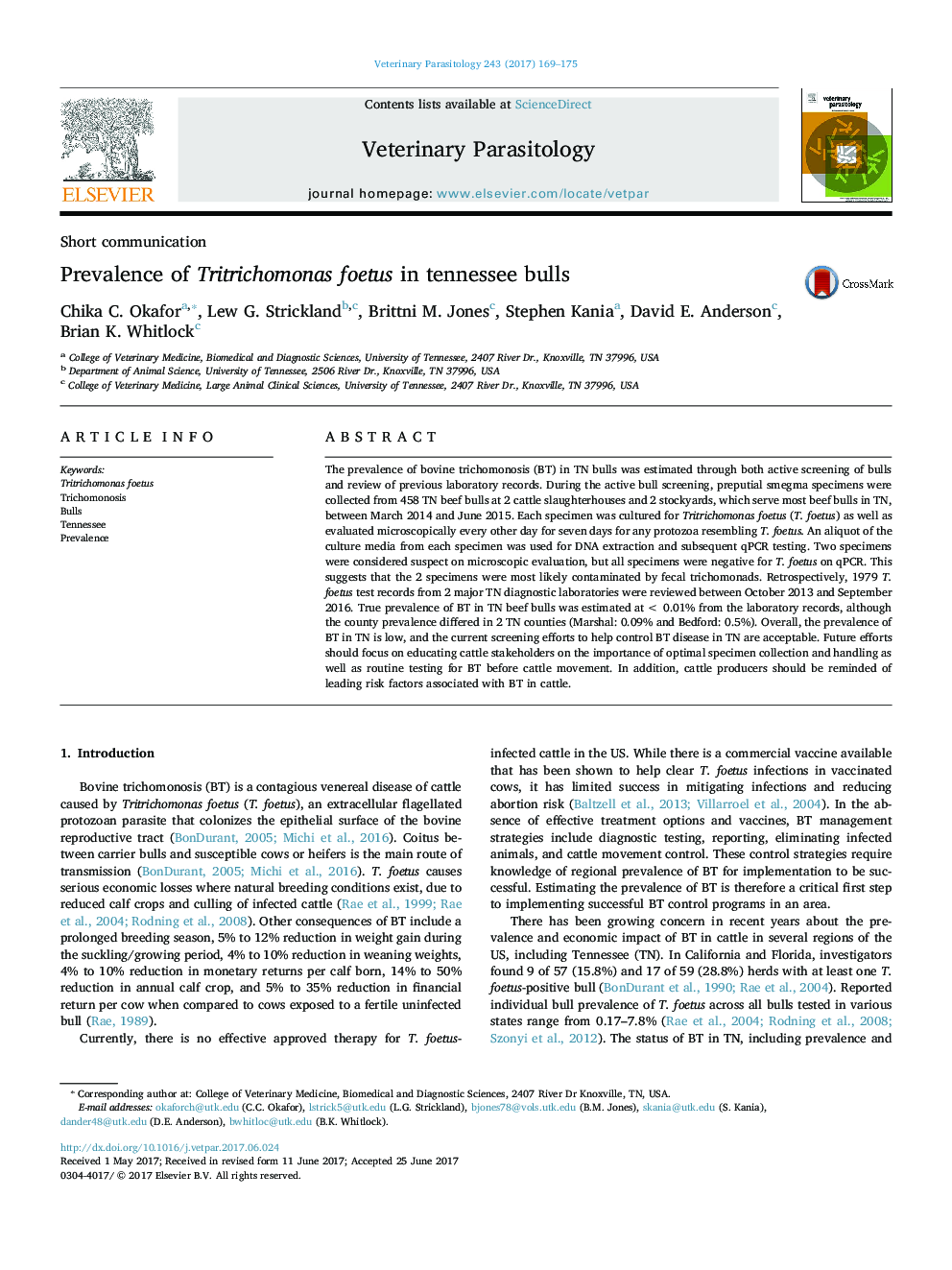| کد مقاله | کد نشریه | سال انتشار | مقاله انگلیسی | نسخه تمام متن |
|---|---|---|---|---|
| 5545620 | 1555633 | 2017 | 7 صفحه PDF | دانلود رایگان |

- True prevalence of Tritrichomonas foetus in Tennessee bulls is <Â 0.01%.
- County prevalence differed in two TN counties (Marshal: 0.09% and Bedford: 0.5%).
- Current surveillance for Bovine Trichomonosis control in TN is effective.
- Future efforts should focus on improving disease prevention awareness.
The prevalence of bovine trichomonosis (BT) in TN bulls was estimated through both active screening of bulls and review of previous laboratory records. During the active bull screening, preputial smegma specimens were collected from 458 TN beef bulls at 2 cattle slaughterhouses and 2 stockyards, which serve most beef bulls in TN, between March 2014 and June 2015. Each specimen was cultured for Tritrichomonas foetus (T. foetus) as well as evaluated microscopically every other day for seven days for any protozoa resembling T. foetus. An aliquot of the culture media from each specimen was used for DNA extraction and subsequent qPCR testing. Two specimens were considered suspect on microscopic evaluation, but all specimens were negative for T. foetus on qPCR. This suggests that the 2 specimens were most likely contaminated by fecal trichomonads. Retrospectively, 1979 T. foetus test records from 2 major TN diagnostic laboratories were reviewed between October 2013 and September 2016. True prevalence of BT in TN beef bulls was estimated at <Â 0.01% from the laboratory records, although the county prevalence differed in 2 TN counties (Marshal: 0.09% and Bedford: 0.5%). Overall, the prevalence of BT in TN is low, and the current screening efforts to help control BT disease in TN are acceptable. Future efforts should focus on educating cattle stakeholders on the importance of optimal specimen collection and handling as well as routine testing for BT before cattle movement. In addition, cattle producers should be reminded of leading risk factors associated with BT in cattle.
Journal: Veterinary Parasitology - Volume 243, 30 August 2017, Pages 169-175